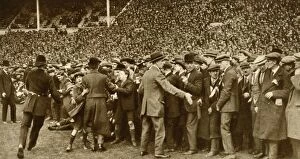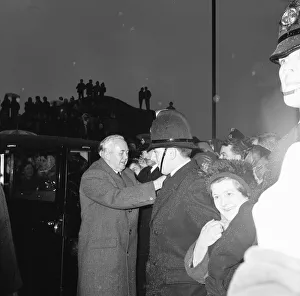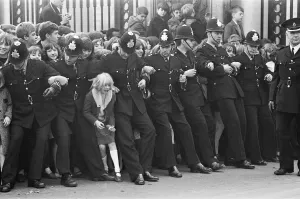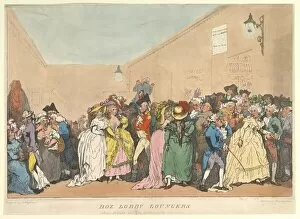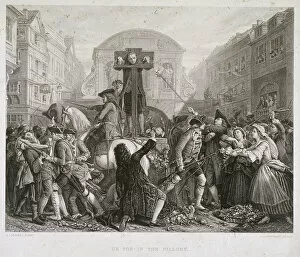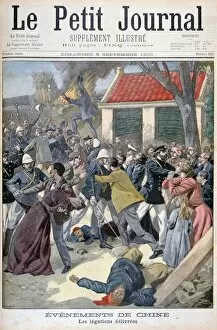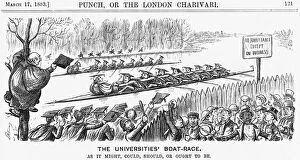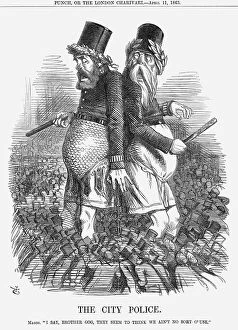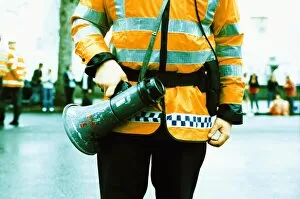Crowd Control Collection
"Crowd Control: A Historical Perspective on Managing Masses" From the first FA Cup Final held at Wembley Stadium in 1923 to the City Police's engraving
All Professionally Made to Order for Quick Shipping
"Crowd Control: A Historical Perspective on Managing Masses" From the first FA Cup Final held at Wembley Stadium in 1923 to the City Police's engraving, it has been a constant challenge throughout history. The images of Box Lobby Loungers in 1811 and the Jubilee Procession of King George V and Queen Mary in 1935 depict different eras where managing crowds was crucial. In an intriguing glimpse into the past, we see Daniel Defoe confined to the Pillory at Temple Bar around 1840. This punishment served as a form of crowd control, deterring potential wrongdoers while attracting curious onlookers. Similarly, during the Great Strike at Hyde Park Corner, mounted police were tasked with maintaining order amidst fervent protests. Across continents, armed troops confronted protesters during an industrial dispute in America circa 1912. The image portrays a tense moment when crowd control became a matter of national security. Meanwhile, Eugene Damblans' artwork captures the chaos of the Boxer Rebellion in China (1900), highlighting how authorities struggled to maintain order amid widespread unrest. The French Republican Guard depicted by F Meaulle in 1899 showcases another facet - using disciplined forces for public safety during significant events or demonstrations. Conversely, rioting on Rue Nationale in Paris (1934) demonstrates how even well-trained forces can be overwhelmed by unruly masses. Lastly, Philippe de Champaigne's painting "The Flagellation of St Gervais" from centuries ago reminds us that controlling crowds is not limited to modern times; it has always been essential for maintaining societal harmony. Through these glimpses into history captured through engravings and artworks alike, we witness various approaches employed over time to manage large gatherings effectively. From sporting events and royal processions to political uprisings and social unrests – each scenario required unique strategies for successful crowd control.


